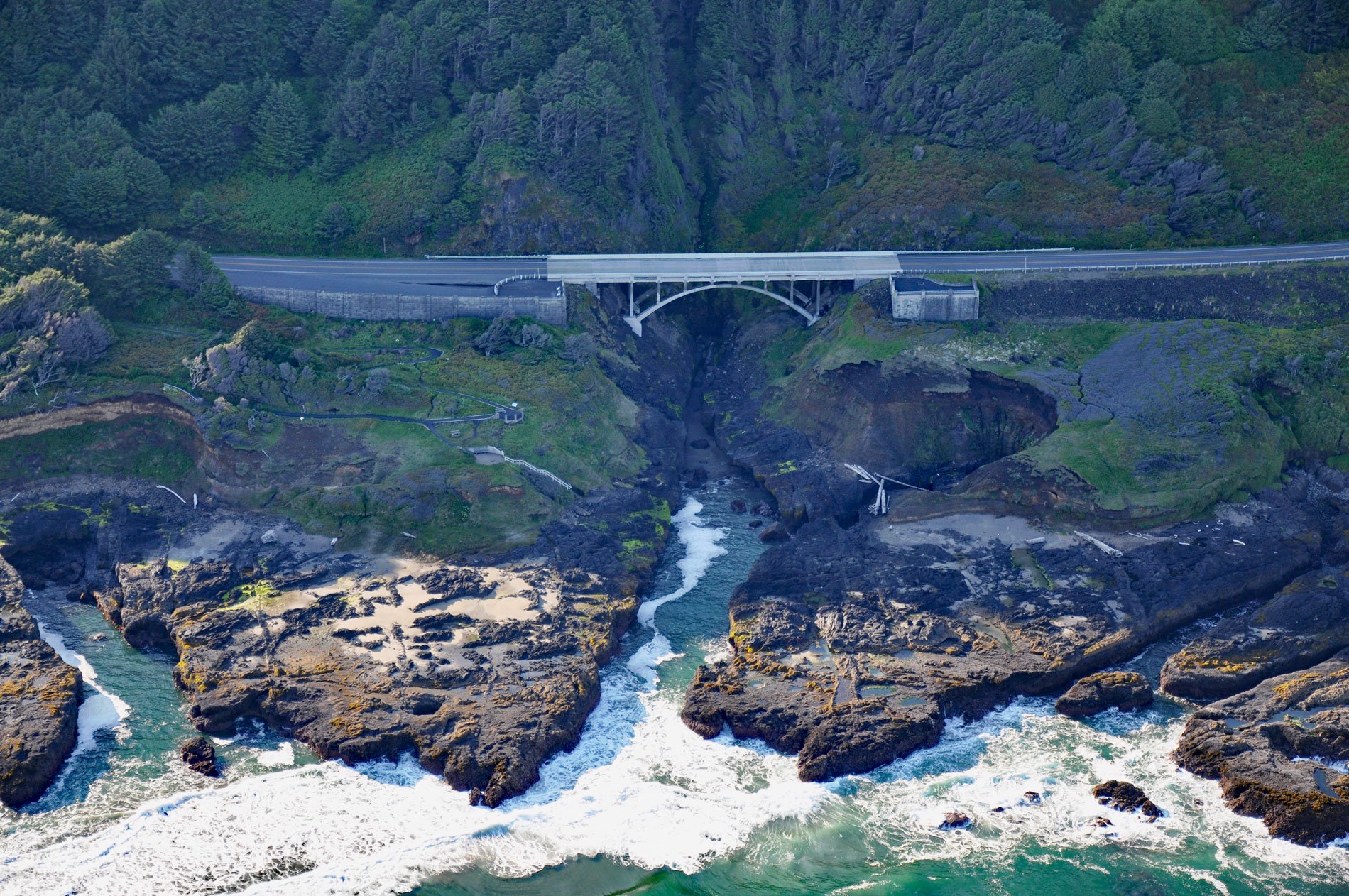Thor’s Well is at Cook’s Chasm, a fissure in the rock approximately 400 feet (122 m) long and 60 feet (18 m) wide between Captain Cook Point and Cape Perpetua, about 20 miles (32 km) north of Florence and 2 miles (3.2 km) south of Yachats, Oregon. The chasm is spanned by U.S. Highway 101 on a concrete arch bridge about 175 feet (53 m) long and built in 2003. Cape Perpetua is a massive forested headland with an elevation of about 800 feet (240 m) on the central Oregon coast in the Siuslaw National Forest where it is a designated scenic area.
There is archaeological evidence that prehistorical people have been part of this landscape for at least 6,000 years and maybe up to 9,000 years. Middens excavated at two sites on the cape have provided insights into village life of the Alsea people who lived here for at least 1500 years and called Cape Perpetua “Halqaikʸ“. On March 7, 1778, Captain James Cook sighted the headland from a distance at sea and named it after Saint Perpetua’s Day. Captain Cook Point and Cook’s Chasm were later named in honor of the explorer. The area became part of the Siuslaw National Forest in 1908. In 1914, the U.S. Forest Service cut a narrow road into the cliff around Cape Perpetua to open travel between the small coastal communities of Yachats and Florence. In 1933, during the Great Depression, the U.S. Congress passed an act establishing the Civilian Conservation Corps. The purpose was to employ people for conservation work and public works projects. Company 963 of the Civil Conservation Corps set up a temporary camp of tents on the south side of Cape Perpetua just north of Cape Creek. They built a campground and numerous trails, and the stone West Shelter on the summit of Cape Perpetua. During World War II, the shelter was used as a coastal watch station, and a large coastal defense gun was temporarily installed.
Many of the basalt rock features along the Oregon coast come from the Columbia Basalts. These basalts emanated from massive eruptions around 300 miles (483 km) away creating an ocean of lava that spread across prehistoric Oregon. Some of the basalts also came from an ancient shield volcano, and Cape Perpetua is likely a remnant of this mountain. Not all of these lava flows were of equal strength and some of the less pure basalt rock is more susceptible to erosion. Weaker spots allow gradual erosion and fracturing by the waves and tides, and eventually, huge cracks developed resulting in features such as Cook’s Chasm, the Devil’s Churn, or the many basalt platforms of random shape that proliferate this area. Along the Cape Perpetua coastline, there are extensive wave-cut platforms, tide pools, and blowholes such as Thor’s Well, a saltwater fountain eroded into wave-cut tidal platforms, where the spouts are hydraulically driven by incoming waves at high tide. Read more here and here. Explore more of Cape Perpetua here:

